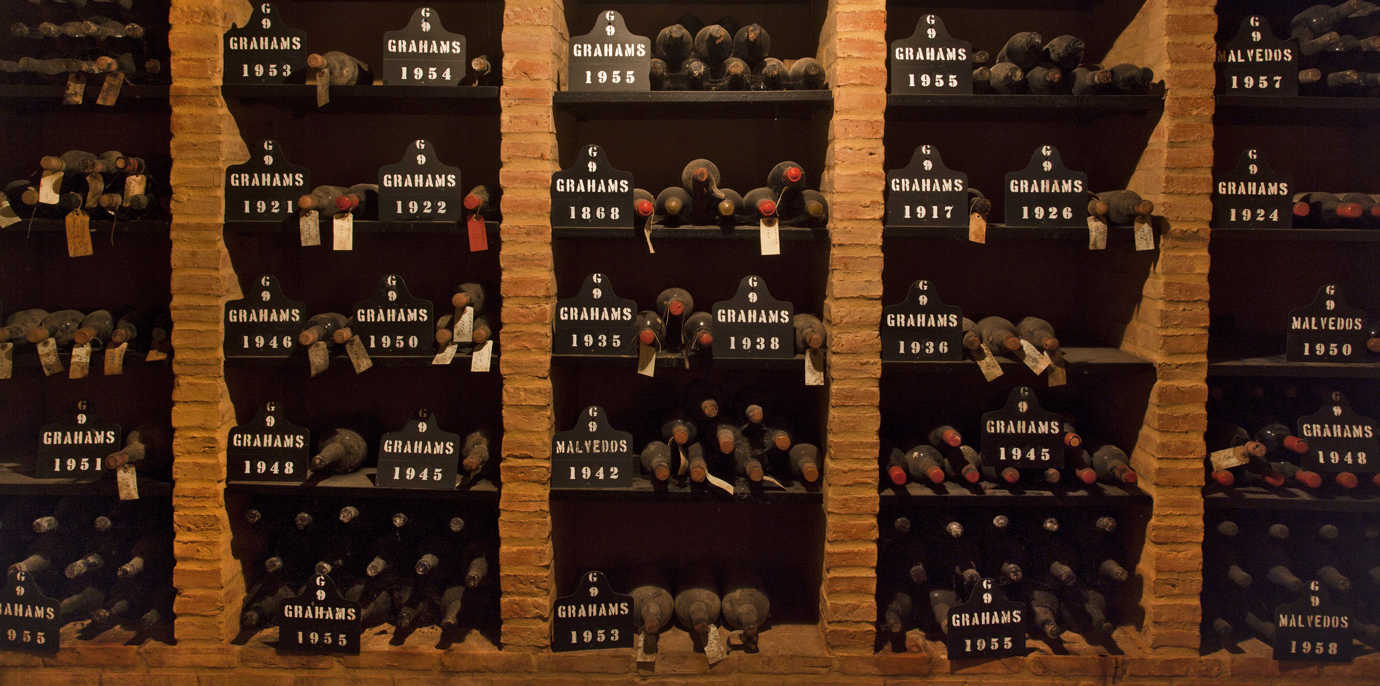

Articles
How To Store Port Wine
Modified: October 20, 2024
Learn the best methods to store port wine for optimal taste and longevity. Read our informative articles on proper storage techniques and tips.
(Many of the links in this article redirect to a specific reviewed product. Your purchase of these products through affiliate links helps to generate commission for Storables.com, at no extra cost. Learn more)
Introduction
Welcome to the world of Port wine! If you love this rich and flavorful fortified wine, then you know how important it is to store it properly to maintain its taste and quality. Whether you’re a collector with a vast Port collection or simply enjoy a bottle from time to time, understanding the best storage practices is crucial.
In this article, we will explore the key factors to consider when storing Port wine, including the ideal storage location, temperature and humidity considerations, protecting against direct sunlight, controlling vibrations, and proper positioning of the bottles. We’ll also discuss how to store opened bottles and provide tips for long-term storage. Lastly, we’ll highlight some common mistakes to avoid in order to preserve the integrity of your Port wine.
Proper storage is vital to ensure that the flavors, aromas, and characteristics of Port wine are preserved over time. By following the guidelines outlined in this article, you’ll be able to enjoy your Port wine to its fullest potential and experience the true essence of this exquisite beverage.
Key Takeaways:
- Preserve the Essence: Properly storing Port wine involves choosing the right location, controlling temperature and humidity, avoiding direct sunlight, minimizing vibrations, and positioning bottles correctly. Care for vintage Ports and follow long-term storage tips to savor the rich flavors.
- Avoid Common Mistakes: Protect the quality of your Port wine collection by avoiding common mistakes such as heat exposure, neglecting temperature fluctuations, overexposing to light, ignoring humidity levels, storing upright, neglecting inspections, and improper labeling. Cheers to preserving the rich history and flavors of Port wine!
Read more: How To Store Opened Port Wine
Understanding Port Wine
Before diving into the intricacies of storing Port wine, it’s essential to have a basic understanding of what Port wine is and its unique characteristics. Port wine is a fortified wine that originates from the Douro Valley in northern Portugal. It is made by adding a neutral grape spirit, often referred to as aguardente, to stop the fermentation process, resulting in a sweeter and higher alcohol content wine.
Port wine is typically rich, full-bodied, and known for its complex flavors and aromas. It is available in various styles, including Ruby, Tawny, Vintage, Late Bottled Vintage (LBV), and White Port. Each style has its own distinct characteristics and aging process, influencing how it should be stored to maintain its quality.
Ruby Port is the most basic style, typically aged for a shorter period and known for its fruity and vibrant flavors. Tawny Port, on the other hand, undergoes extended aging in oak barrels, resulting in a more oxidized and nutty profile. Vintage Port is made from the best grapes in a declared vintage year and requires long aging in the bottle to reach its peak. LBV Port is similar to Vintage Port but is aged for a shorter period and can be consumed without further aging. White Port is made from white grapes and offers a refreshing and lighter alternative to red Port wines.
By understanding the different styles of Port wine, you can better assess the appropriate storage conditions and shelf life for each type. It’s important to note that while certain general storage guidelines apply to all Port wines, vintage Ports require special care due to their aging potential and delicate nature.
Now that we have a solid foundation in understanding Port wine, let’s explore how to select the right storage location to protect its quality and integrity.
Choosing the Right Storage Location
When it comes to storing your Port wine, the first step is to select an appropriate storage location. The goal is to find a place that provides optimal conditions to preserve the wine’s flavors, aromas, and overall quality. Here are some factors to consider when choosing the right storage location:
- Temperature Stability: Port wine should be stored in an area with a stable temperature, preferably between 55°F (12°C) and 65°F (18°C). Fluctuations in temperature can cause the wine to expand and contract, potentially damaging the cork and compromising the seal. Avoid storing Port wine in areas prone to extreme temperature swings, such as attics or garages.
- Humidity Control: Port wine bottles should be stored in an environment with moderate humidity levels, ideally between 50% and 80%. Proper humidity helps to keep the cork moist and prevents it from drying out, which could lead to oxidation and leakage. Excessively dry conditions can also cause the wine to deteriorate prematurely. Consider using a humidifier or placing a bowl of water nearby to maintain the desired humidity level.
- Dark and Odor-free Space: Keep your Port wine away from direct sunlight, as it can accelerate the aging process and negatively impact the wine’s flavor and color. Choose a storage location that is dark or shielded from UV light. Additionally, avoid areas with strong odors, as Port wine is sensitive and can easily absorb smells from its surroundings.
- Absence of Vibrations: Port wine is susceptible to damage from constant vibrations, which can disturb the sediment and affect its quality. Select a storage space away from appliances, machinery, or areas with heavy foot traffic to minimize vibrations.
- Adequate Ventilation: While it’s important to keep the storage environment dark, make sure there is proper airflow to prevent stagnant air and mold growth. Limited airflow can lead to musty odors and potential alteration of the wine’s taste.
- Consistent Temperature: Avoid storing Port wine in areas that experience significant temperature fluctuations, such as near heating or cooling vents. Consistency is key to preserving the wine’s quality and preventing any damage that could occur as a result of rapid temperature changes.
By selecting a storage location that satisfies these criteria, you can provide the ideal conditions for your Port wine to age gracefully and develop its full potential. Remember, a proper storage environment is crucial in maintaining the integrity of your collection. Now that you have chosen the right storage location, let’s delve into the importance of temperature and humidity control.
Temperature and Humidity Considerations
Temperature and humidity are two vital factors to consider when it comes to storing Port wine. Maintaining the correct levels of temperature and humidity plays a crucial role in preserving the quality and aging potential of your wine. Let’s explore their significance in more detail:
- Temperature: Port wine should be stored in a cool environment with a consistent temperature. Fluctuations in temperature can negatively impact the aging process and lead to premature deterioration of the wine. High temperatures can accelerate the aging process, resulting in a loss of flavor and aroma. On the other hand, excessively low temperatures may cause the wine to become dormant and slow down its maturation. Aim for a storage temperature between 55°F (12°C) and 65°F (18°C) for optimal results.
- Humidity: Proper humidity levels are equally important when it comes to storing Port wine. The ideal humidity range for wine storage is between 50% and 80%. Humidity levels that are too low can cause the cork to dry out, leading to oxidation and potential leakage. Conversely, excessive humidity can promote mold growth and damage the labels. To maintain the desired humidity, consider using a humidifier or placing a humidification device in your storage space.
- Storage Equipment: Investing in quality wine storage equipment can help regulate temperature and humidity more effectively. Wine refrigerators or coolers specially designed for wine storage offer temperature control and humidity features that ensure the ideal conditions for your Port wine. These storage units help protect your collection from external fluctuations and maintain a consistent environment.
It’s important to note that while temperature and humidity are crucial, consistency is key. Avoid dramatic or rapid changes in these factors, as they can harm the wine. Gradual changes within an acceptable range are considered more favorable for aging and maintaining the integrity of your Port wine.
To monitor the temperature and humidity levels accurately, consider using a digital thermometer and hygrometer. These devices provide real-time data and allow you to make any necessary adjustments to create an environment where your Port wine can thrive.
Now that we’ve covered the temperature and humidity considerations, let’s move on to another important aspect of Port wine storage: avoiding direct sunlight.
Avoiding Direct Sunlight
Protecting your Port wine from direct sunlight is crucial for maintaining its quality over time. Exposure to sunlight can have a detrimental effect on the wine, causing it to age prematurely and lose its flavor and aroma. Here’s why you should take steps to avoid direct sunlight:
- UV Radiation: Sunlight contains ultraviolet (UV) radiation, which can penetrate the wine bottle and interact with its compounds. UV radiation can break down the molecular structure of the wine, resulting in the loss of delicate flavors and aromas. This can lead to a flat and oxidized taste, diminishing the overall drinking experience. UV rays can also cause the wine’s color to fade and become lighter in shade.
- Temperature Increase: When wine is exposed to direct sunlight, it causes a rise in temperature inside the bottle. Elevated temperatures accelerate the aging process and can lead to the premature aging of the wine. Higher temperatures also contribute to the breakdown of complex compounds, resulting in a loss of depth and nuance in the wine’s flavor profile.
- Light Striking the Bottle: Even if the wine is stored in a dark storage area, light can still have a negative impact if it strikes the bottle directly. This is particularly true for clear or light-colored glass bottles. The light filters through the glass and interacts with the wine, causing chemical reactions that alter its composition and flavor.
To avoid the negative effects of direct sunlight, follow these practical tips:
- Store in a Shaded Area: Place your Port wine in a location that is shielded from direct sunlight. A wine cellar or a dark corner of a room without windows is an ideal choice. If you don’t have a dedicated wine storage area, consider using blackout curtains or blinds to block out any natural light.
- Use UV-Protected Glass: If you have a wine cabinet or display case with glass doors, opt for UV-protected glass. This type of glass helps reduce the amount of UV radiation that can reach the wine bottles, offering an additional layer of protection.
- Wrap Bottles in Dark Cloth: If you have a wine rack or storage system where direct sunlight is inevitable, consider wrapping the bottles in a dark-colored cloth or storing them in wine bags that shield them from light exposure.
- Avoid Displaying in Sunlit Areas: If you enjoy showcasing your Port wine collection, make sure to avoid placing it in areas where sunlight directly falls, such as near windows or glass cabinets exposed to sunlight. Opt for dimly lit or shaded areas instead.
By taking these precautions to avoid direct sunlight, you can help preserve the flavors, aromas, and overall quality of your cherished Port wine collection. In the next section, we’ll delve into the importance of controlling vibrations in wine storage.
Read more: How To Store Port Wine After Opening
Controlling Vibrations
When it comes to storing your Port wine, it’s crucial to minimize vibrations as much as possible. Vibrations can disrupt the sediment in the wine, potentially affecting its taste and quality. Here’s why controlling vibrations is essential:
- Sediment Disturbance: Port wines, especially those with extended aging, develop sediment in the bottle as they mature. This sediment consists of tannins and pigments that precipitate over time. When the wine is subjected to vibrations, whether from nearby appliances, machinery, or even foot traffic, it can disturb the sediment and mix it back into the wine. This can result in a cloudy appearance and affect the texture and taste of the wine.
- Chemical Reactions: Vibrations can accelerate chemical reactions in the wine, altering its composition and potentially compromising its flavors and aromas. Agitating the wine through constant vibrations can lead to premature aging and a loss of complexity, resulting in a less enjoyable drinking experience.
- Bottle Integrity: Vibrations can also impact the structural integrity of the bottle and the stability of the cork seal. Constant movement and agitation can increase the likelihood of leaks and spoilage. A compromised seal can expose the wine to oxygen, leading to oxidation and spoilage.
To minimize vibrations and protect your Port wine, consider the following practices:
- Sturdy Storage: Choose a storage area or wine rack made of sturdy materials that can absorb or dampen vibrations. Avoid placing your wine bottles directly on top of appliances or near areas with frequent movement.
- Safe Distance: Keep your wine collection away from sources of vibrations, such as washing machines, dryers, or HVAC systems. These appliances generate continuous vibrations that can negatively impact the wine over time.
- Proper Handling: When moving or reorganizing your Port wine bottles, handle them carefully and avoid unnecessary agitation. Gently place them down to prevent disturbing the sediment or causing any internal shocks that could affect their quality.
- Dedicated Wine Refrigeration Units: Investing in a dedicated wine refrigerator or cellar with vibration-dampening technology is an excellent option if you have a significant collection. These units are designed to minimize vibrations and provide a stable environment for your Port wine.
By taking measures to control vibrations, you can ensure the integrity and quality of your Port wine collection, preserving its flavors and characteristics for years to come. In the next section, we’ll discuss the importance of properly positioning the bottles during storage.
Store port wine in a cool, dark place, away from direct sunlight and temperature fluctuations. It should be stored upright to minimize oxidation and should be consumed within a few days of opening.
Positioning the Bottles
Properly positioning your Port wine bottles during storage is essential to maintain their quality and prevent any potential issues that may arise over time. Here are some guidelines on how to position your bottles correctly:
- Horizontal Orientation: Storing your Port wine bottles horizontally is the preferred method. This position keeps the wine in contact with the cork, ensuring it stays moist and prevents the cork from drying out. A dry cork can lead to oxidation and leakage, compromising the quality of the wine.
- Secure Bottle Restraints: To prevent any accidental movement or rolling of the bottles, consider using bottle restraints or wine rack systems that securely hold the bottles in place. This helps minimize vibrations and keeps the bottles stable. It also makes it easier to access specific bottles without disturbing the others.
- Avoid Stacking: While it may be tempting to stack your Port wine bottles to save space, it is generally advisable to avoid doing so. Stacking can put pressure on the lower bottles and increase the risk of breakage or damage. If you need to stack bottles, make sure to use a secure and stable stacking method.
- Clear Label Visibility: Position the bottles in a way that allows you to see the labels clearly. This makes it easier to identify and select specific bottles without unnecessary handling and movement. It also helps prevent damage to the labels when retrieving or replacing the bottles in storage.
- Separate Different Styles: If you have multiple styles of Port wine, consider organizing them separately in your storage area. This allows for better organization and helps minimize any potential interaction between the different wine styles, ensuring each bottle retains its unique characteristics.
- Consider Wine Racks with Tilted Shelves: Opting for wine racks with tilted shelves can be beneficial for long-term storage. The slight tilt allows any sediment in the bottle to settle towards the side, keeping it away from the neck of the bottle. This can help facilitate easier pouring and reduce the likelihood of disturbing the sediment during bottle handling.
By following these positioning guidelines, you can maintain the integrity of your Port wine bottles and easily access specific bottles while keeping the collection well-organized. In the next section, we’ll discuss how to store opened bottles of Port wine.
Storing Opened Bottles
Once you’ve opened a bottle of Port wine, it’s important to store it properly to preserve its flavors and prevent spoilage. While Port is known for its ability to last longer after opening compared to other wines, it still requires some attention to maintain its quality. Here are some tips for storing opened bottles of Port wine:
- Re-cork or Re-seal: After opening a bottle of Port wine, make sure to re-cork or re-seal it tightly. This prevents excessive air exposure, which can lead to oxidation and spoilage. If you no longer have the original cork, consider using a wine stopper or vacuum-sealing device to create a tight seal.
- Store in Cool Temperature: Like unopened bottles, opened Port wine should be stored in a cool location. Aim for a temperature between 55°F (12°C) and 65°F (18°C) to slow down the oxidation process. Avoid storing opened bottles in warm areas, as higher temperatures can accelerate the deterioration of the wine.
- Limit Air Exposure: Minimize the amount of time the opened bottle is exposed to air. Air exposure can cause the wine to lose its aromas and flavors more rapidly. Enjoy the opened Port wine within a few days to a week if possible.
- Refrigerate if Needed: If you anticipate that it will take longer to finish the opened bottle, especially in warmer environments or during the summer months, consider refrigerating it. This helps slow down the oxidation process and prolong the shelf life. Just be sure to bring the Port wine back to room temperature before serving to fully appreciate its flavors.
- Label and Date: It’s a good practice to label the opened bottle with the date of opening. This helps you keep track of how long it has been open and continue to monitor its freshness. It also prevents confusion if you have multiple opened bottles of Port wine.
- Consume Within a Reasonable Timeframe: While Port wine has the advantage of lasting longer after opening, it is still a perishable beverage. To enjoy the best quality and flavors, try to consume the opened bottle within a reasonable timeframe, preferably within a few months.
By following these guidelines, you can prolong the enjoyment of your opened Port wine and ensure that each glass tastes as delicious as the first. In the next section, we’ll explore specific considerations and care for vintage Ports.
Caring for Vintage Ports
Vintage Ports are highly sought after by wine enthusiasts, as they represent the finest expressions of Port wine from exceptional harvest years. These wines have the potential to age for several decades and require special care to reach their peak. Here are some important considerations and care tips for vintage Ports:
- Decanting: Vintage Ports often develop sediment during their long aging process. Before serving, it is advisable to decant the wine carefully to separate it from the sediment. This process helps enhance the wine’s flavors and aromas by allowing it to breathe and minimize any debris that may affect the drinking experience. Decanters with a wide base and long neck are recommended for vintage Ports.
- Slow Aeration: Unlike other wines that benefit from prolonged exposure to air, vintage Ports are more delicate. They should be allowed to aerate slowly in the decanter or glass over time, rather than aggressively swirling or exposing them to excessive oxidation. This slow aeration helps in preserving the wine’s complex flavors and preventing any abrupt changes in taste.
- Temperature Control: Vintage Ports, like all wines, should be stored at a consistent temperature between 55°F (12°C) and 65°F (18°C). It’s important to keep the wine in a cool and stable environment to avoid any accelerated aging or deterioration. Vintage Ports are particularly sensitive to temperature fluctuations, which can affect their balance and overall quality.
- Humidity Levels: Vintage Ports, especially those sealed with natural cork, benefit from moderate humidity levels between 50% and 80%. Sufficient humidity helps keep the cork moist and prevents it from drying out, ensuring a proper seal. This is crucial for preventing premature oxidation and maintaining the wine’s aging potential.
- Optimal Aging: Vintage Ports have tremendous aging potential and can evolve and improve with time. For optimal aging, store the bottles horizontally to keep the cork in contact with the wine and minimize the risk of drying out. Maintain a cool, dark, and vibration-free environment to allow the wine to mature harmoniously and develop complex flavors and aromas.
- Long-Term Storage: If you plan to store vintage Ports for an extended period, it’s essential to monitor their aging process. Regularly check the cork for signs of leakage or deterioration and ensure the storage conditions remain consistent. Consider investing in a temperature and humidity-controlled wine cellar or refrigerator to provide the ideal environment for long-term storage.
Vintage Ports deserve special attention and care due to their exceptional quality and aging potential. By following these care tips, you can enjoy these exquisite wines as they evolve and reveal their full range of flavors and nuances over time. In the next section, we’ll provide some general tips for long-term storage of Port wine.
Read more: How To Store Tawny Port
Tips for Long-Term Storage
If you’re looking to store your Port wine for the long-term, whether it’s vintage Ports or other styles that can benefit from aging, here are some valuable tips to ensure optimal storage conditions:
- Invest in Proper Wine Storage: Consider investing in a dedicated wine storage solution, such as a temperature-controlled wine cellar, refrigerator, or wine cabinet. These units provide the ideal settings for long-term storage, including stable temperatures, humidity control, and protection from light and vibrations.
- Maintain Consistent Temperature: A consistent temperature is vital for long-term wine storage. Aim for a temperature between 55°F (12°C) and 65°F (18°C) to slow down the aging process. Avoid drastic temperature fluctuations, as they can negatively impact the wine’s quality and lead to premature aging or spoilage.
- Monitor Humidity Levels: Proper humidity levels, between 50% and 80%, are crucial for long-term wine storage. This range helps keep the cork moist and prevents it from drying out. Use a digital hygrometer to monitor the humidity levels and consider using a humidifier or a container of water to maintain the desired moisture in the storage area.
- Store Bottles Horizontally: Storing Port wine bottles horizontally helps keep the cork moist and prevents it from shrinking or drying out. This ensures a proper seal and reduces the risk of oxidation. If you have a large collection, invest in wine racks or shelving specifically designed for horizontal bottle storage.
- Minimize Light Exposure: Protect your Port wine from direct sunlight and UV rays, as they can accelerate the aging process and impact the wine’s flavor and color. Store the bottles in a dark area or consider using UV-protected glass doors or blackout curtains on your wine storage unit.
- Control Vibrations: Minimize vibrations in your wine storage area by keeping it away from appliances, machinery, or areas with heavy foot traffic. Vibrations can disturb the sediment in the wine and affect its overall quality. Choose a stable and sturdy location for your wine collection.
- Organize and Track Your Collection: Keep a detailed record of your Port wine collection, including the vintage, producer, and storage date. This will help you track the aging process and ensure that you consume the bottles in the correct order. Organize your collection in a way that makes it easy to access specific bottles without disturbing the others.
- Regularly Inspect and Handle Bottles: Periodically inspect your Port wine bottles for any signs of leakage, mold, or damage. Handle the bottles gently and avoid unnecessary movement or agitation. If you need to move or reorganize your collection, do so with care to prevent sediment disturbance and maintain bottle integrity.
By following these tips, you can create an optimal long-term storage environment for your Port wine collection. Remember that patience is key when it comes to aging Port wines, as they often require several years or even decades to reach their peak. Now, let’s explore some common mistakes to avoid when storing your Port wine.
Common Mistakes to Avoid
When it comes to storing Port wine, there are some common mistakes that can compromise the quality and longevity of your collection. By being aware of these pitfalls, you can ensure that your Port wine is stored correctly and remains in optimal condition. Here are some of the most common mistakes to avoid:
- Exposing Wine to Heat: Heat is one of the biggest enemies of wine. Avoid storing your Port wine in areas that are subject to high temperatures, such as near heating vents, radiators, or kitchen appliances. Elevated temperatures can accelerate the aging process, resulting in a loss of flavors and aromas.
- Neglecting Temperature Fluctuations: Temperature fluctuations can have a detrimental effect on your Port wine. Avoid storing your bottles in areas where the temperature varies significantly, such as attics or garages. Rapid changes in temperature can cause the wine to expand and contract, potentially damaging the cork and compromising the seal.
- Overexposing Wine to Light: Sunlight and UV rays can cause wine to age prematurely and affect its flavors and colors. Always store your Port wine in a dark area away from direct sunlight. If you display your wine collection, use tinted glass or shades to protect the bottles from harmful light exposure.
- Ignoring Humidity Levels: Humidity plays a critical role in preserving the quality of your Port wine. Neglecting proper humidity levels can lead to dry corks, which may result in oxidation and leakage. On the other hand, excessive humidity can promote mold growth. Use a hygrometer to monitor and maintain humidity levels between 50% and 80% in your wine storage area.
- Storing Bottles Upright: Unlike some other types of wine, Port wine should be stored horizontally. Storing bottles upright can cause the cork to dry out and may lead to premature oxidation. Keeping the wine in contact with the cork helps maintain the seal and ensures the wine ages gracefully.
- Neglecting Regular Inspections: Regularly inspect your Port wine bottles for any signs of leakage, mold, or damage. Check the condition of the corks and make sure they’re still intact. Handle the bottles gently to minimize disturbance to any sediment that may have formed over time.
- Not Properly Labeling and Organizing: Failing to label and organize your collection can lead to confusion and potential mishandling of the bottles. Improper organization may result in accidentally opening a bottle earlier than intended or misplacing valuable vintages. Keep detailed records and properly label your bottles to ensure easy access and proper aging.
- Storing in the Kitchen Fridge: Domestic refrigerators are not designed for long-term wine storage. The low humidity and constant vibrations can negatively impact the quality of your Port wine. While a short-term cooling solution is acceptable, invest in a dedicated wine fridge or cellar for extended storage.
By avoiding these common mistakes, you can safeguard the integrity of your Port wine collection and ensure that each bottle retains its exceptional qualities for many years to come. Now, let’s summarize the main points discussed in this article.
Conclusion
Properly storing Port wine is essential to preserve its flavors, aromas, and overall quality. Whether you’re a collector with a diverse Port wine collection or simply enjoy a bottle from time to time, understanding the best storage practices is crucial. Throughout this article, we’ve covered various aspects of storing Port wine, from choosing the right storage location to controlling temperature and humidity, avoiding direct sunlight, handling vibrations, and positioning the bottles correctly.
By selecting an appropriate storage location with stable temperature and humidity levels, you create an environment that promotes slow and consistent aging. Avoiding direct sunlight protects the wine from harmful UV rays and prevents premature aging. Minimizing vibrations helps maintain the integrity of the wine and prevents sediment disturbance. Storing bottles horizontally keeps the cork moist and ensures a proper seal, preventing oxidation. Additionally, we discussed the importance of caring for vintage Ports and provided tips for long-term storage, along with common mistakes to avoid.
Remember, storing Port wine should be a balance of maintaining optimal conditions while allowing it to age gracefully. Keeping track of your collection, regularly inspecting the bottles, and handling them with care are crucial for preserving their quality. By following these guidelines, you can enjoy your Port wine to its fullest potential and experience the unique and exquisite flavors it has to offer, whether it’s a recently opened bottle or a well-aged vintage.
So, whether you’re starting your Port wine collection or already have one, apply these storage techniques and enjoy the journey of savoring this exceptional fortified wine. Cheers to preserving the rich history and flavors of Port wine for generations to come!
Frequently Asked Questions about How To Store Port Wine
Was this page helpful?
At Storables.com, we guarantee accurate and reliable information. Our content, validated by Expert Board Contributors, is crafted following stringent Editorial Policies. We're committed to providing you with well-researched, expert-backed insights for all your informational needs.



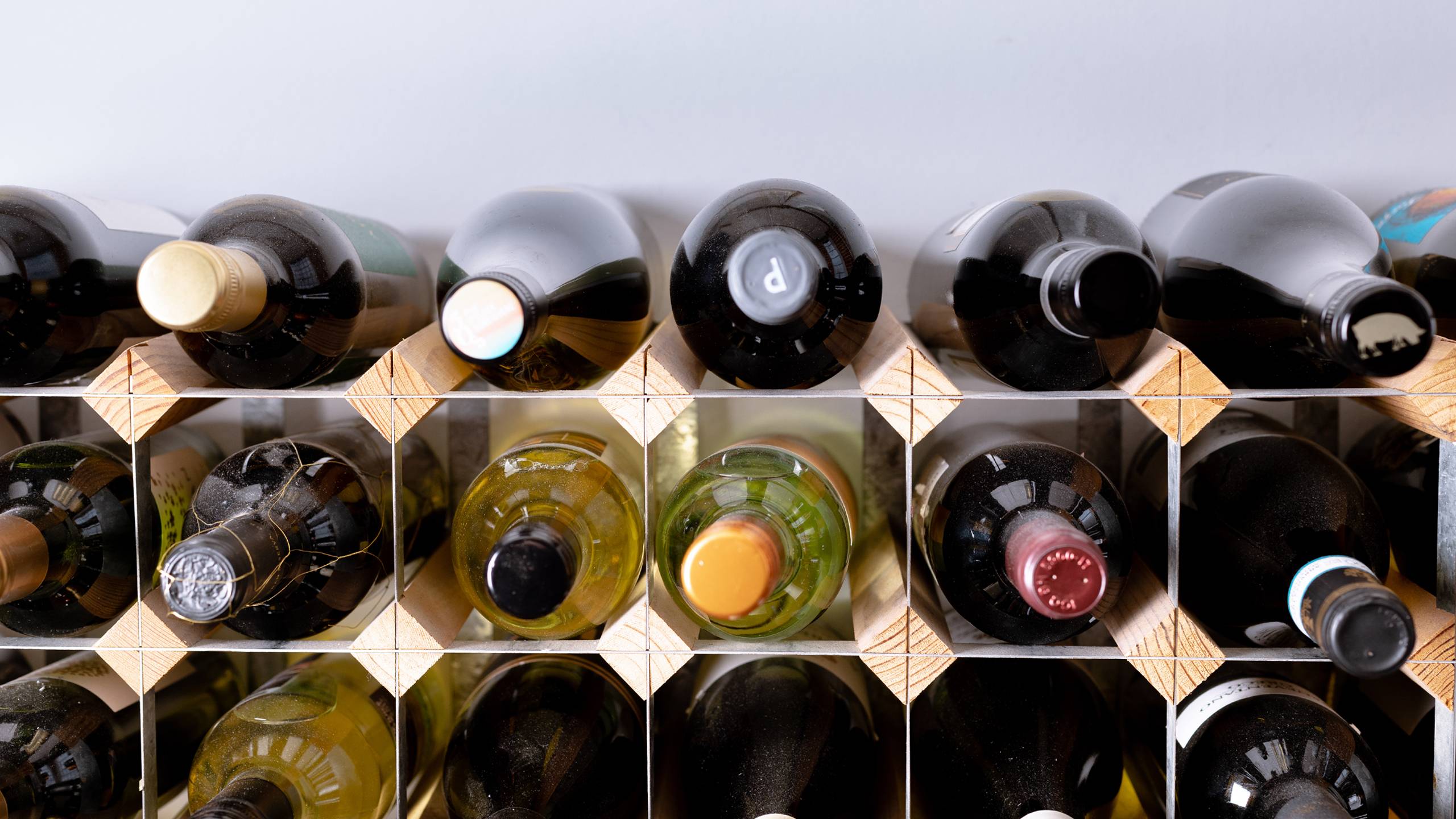
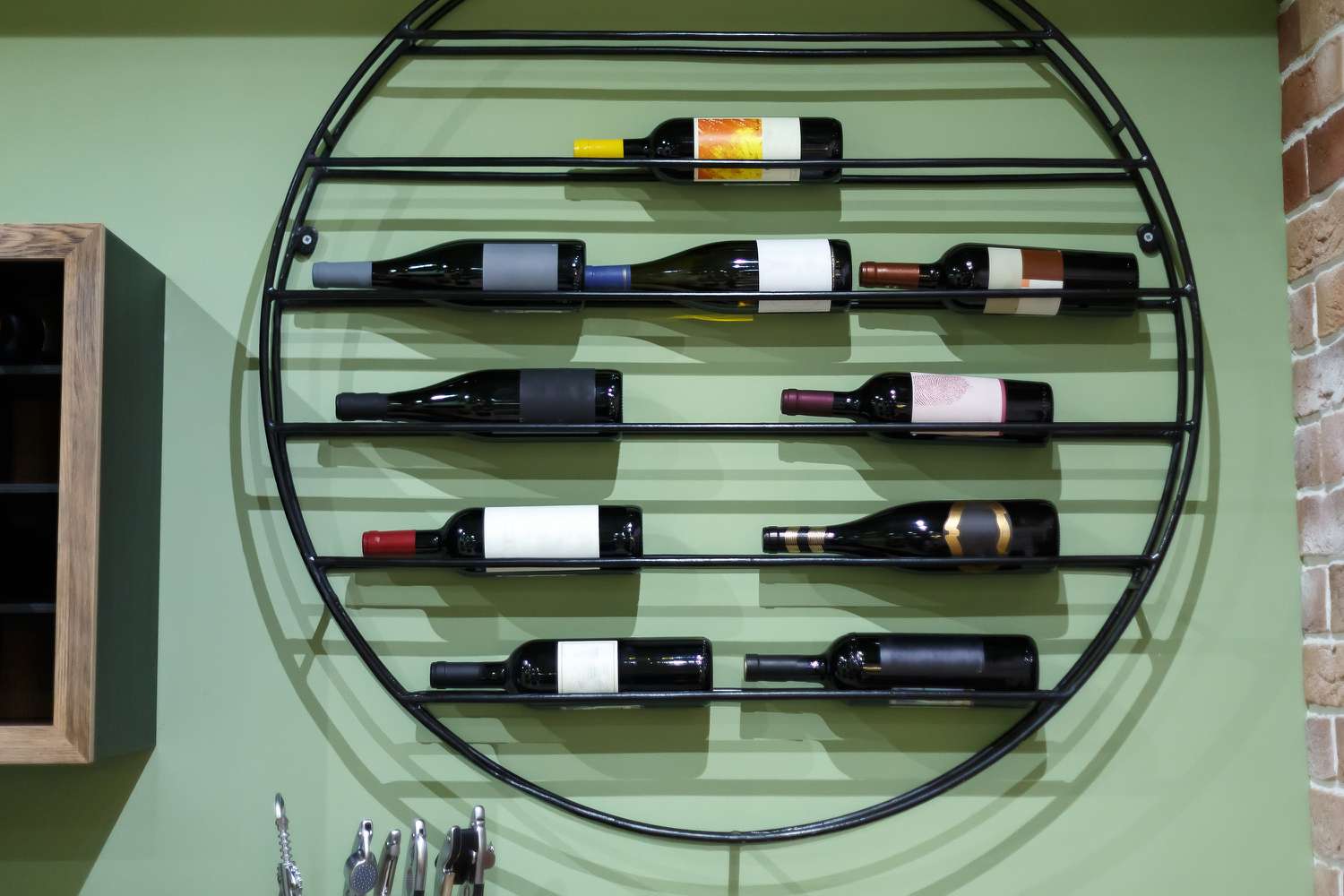

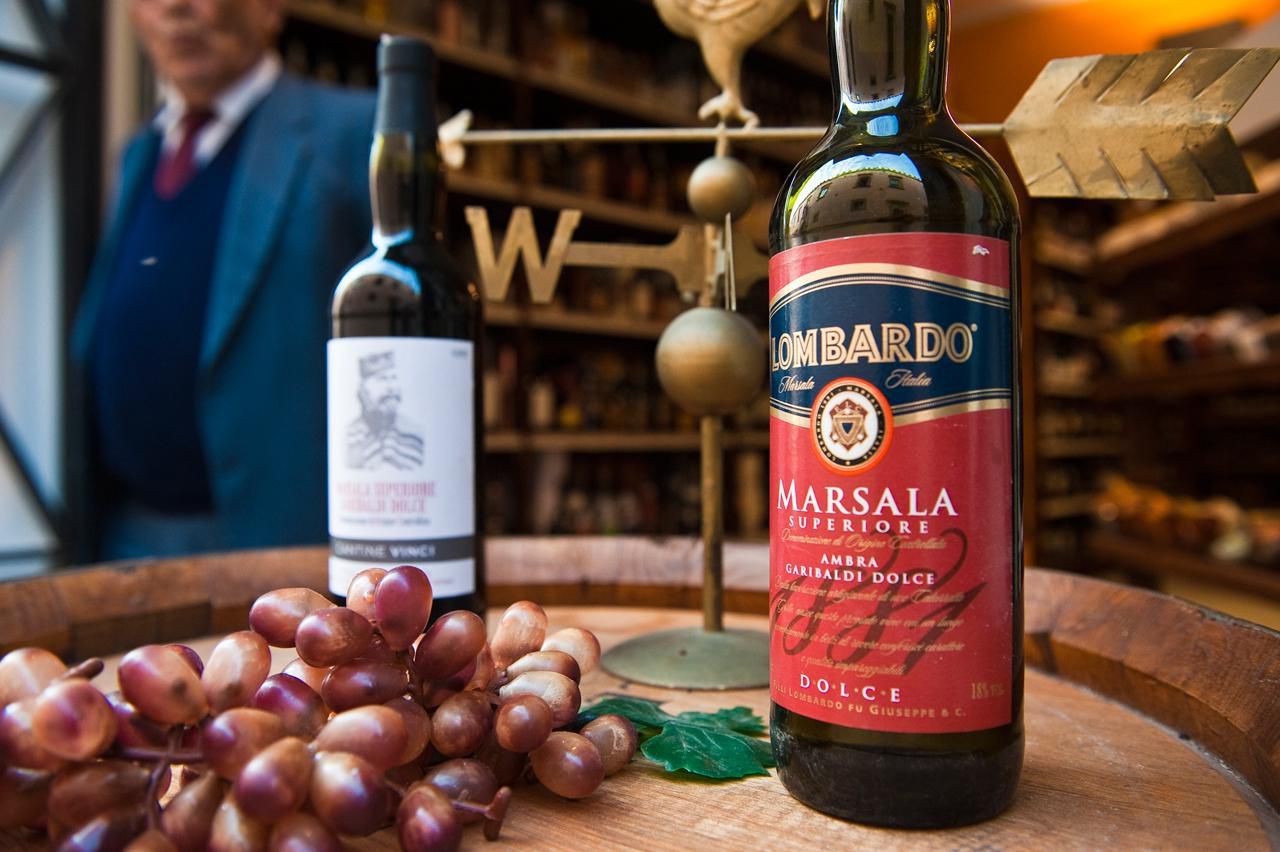
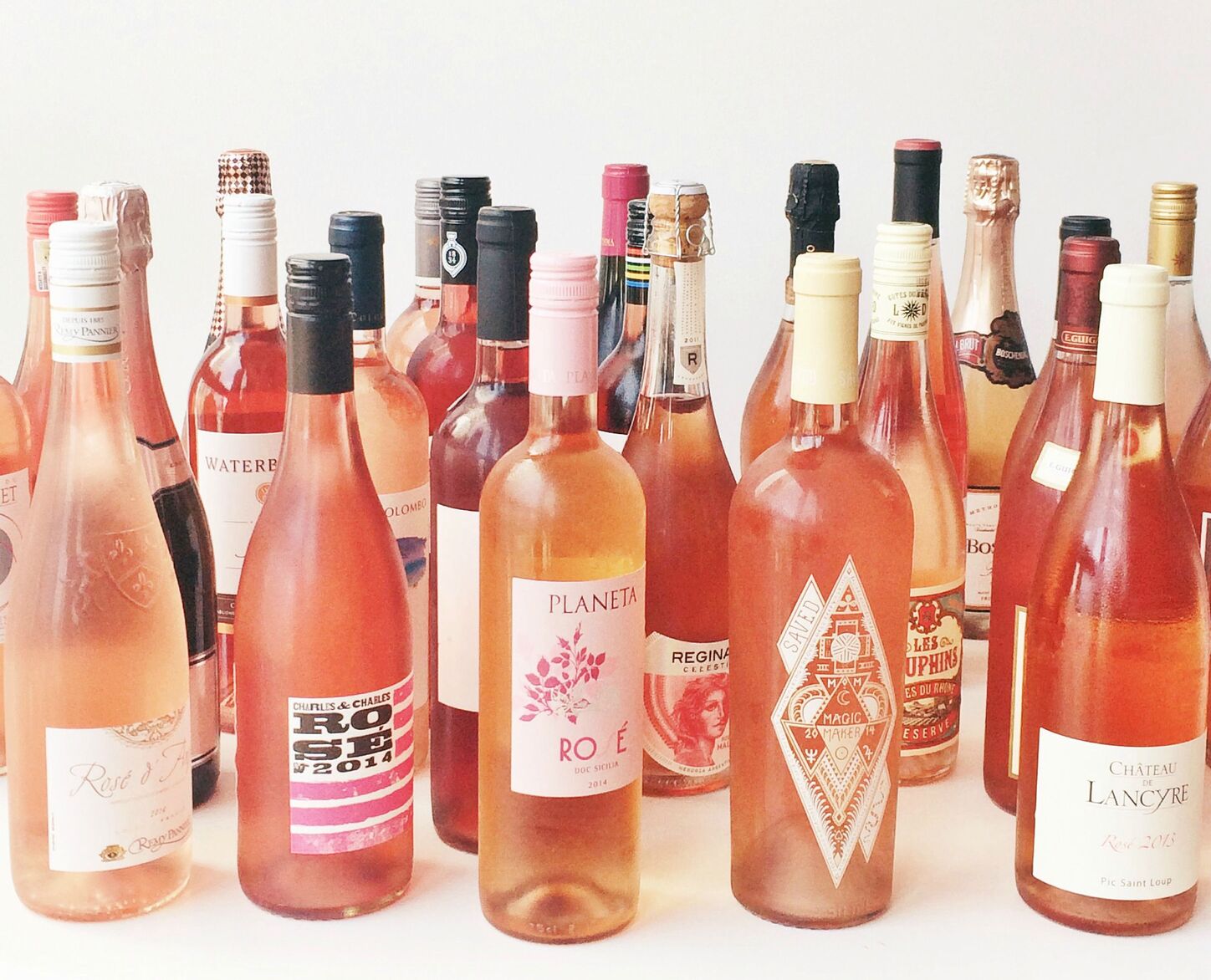
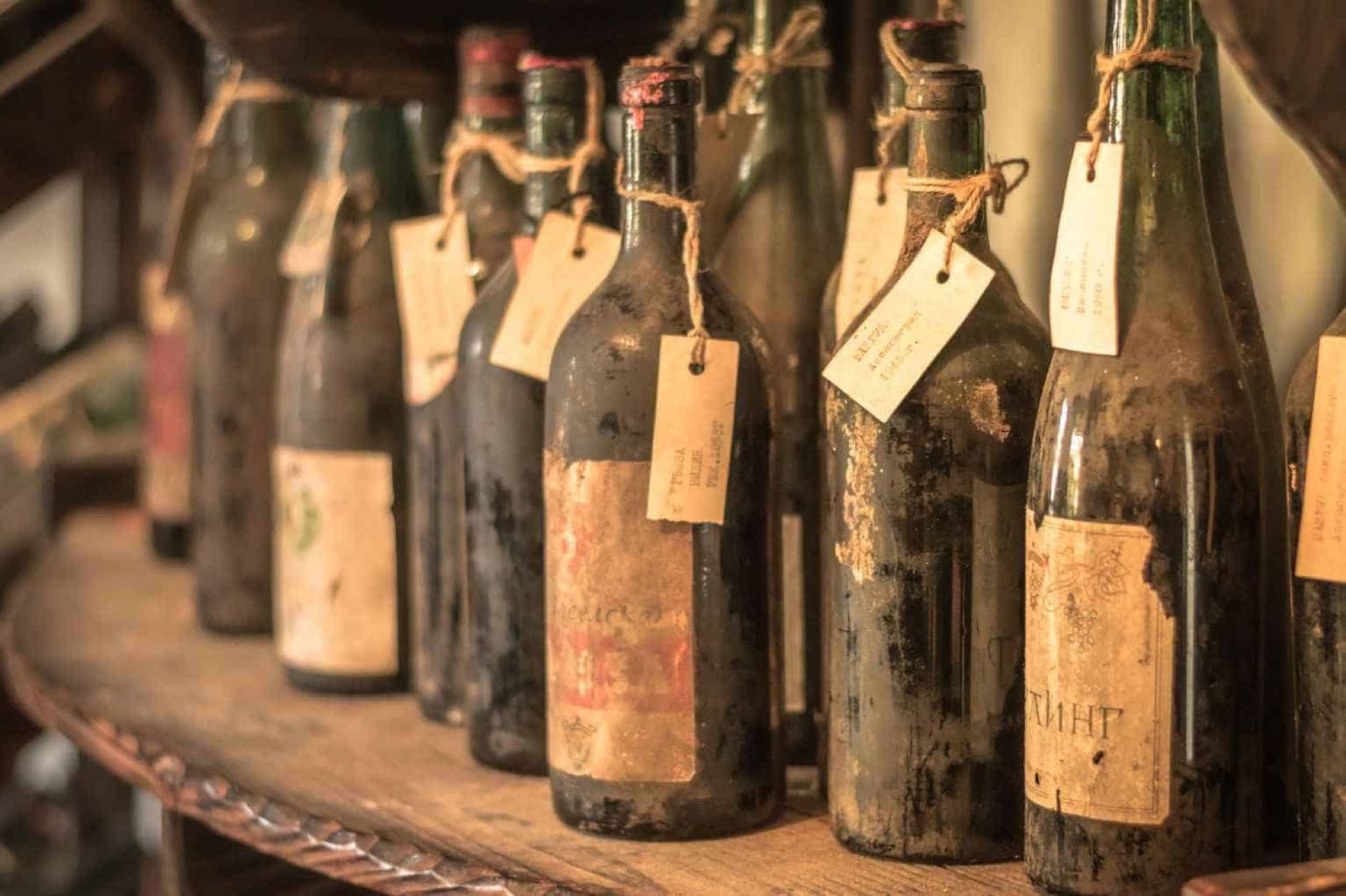


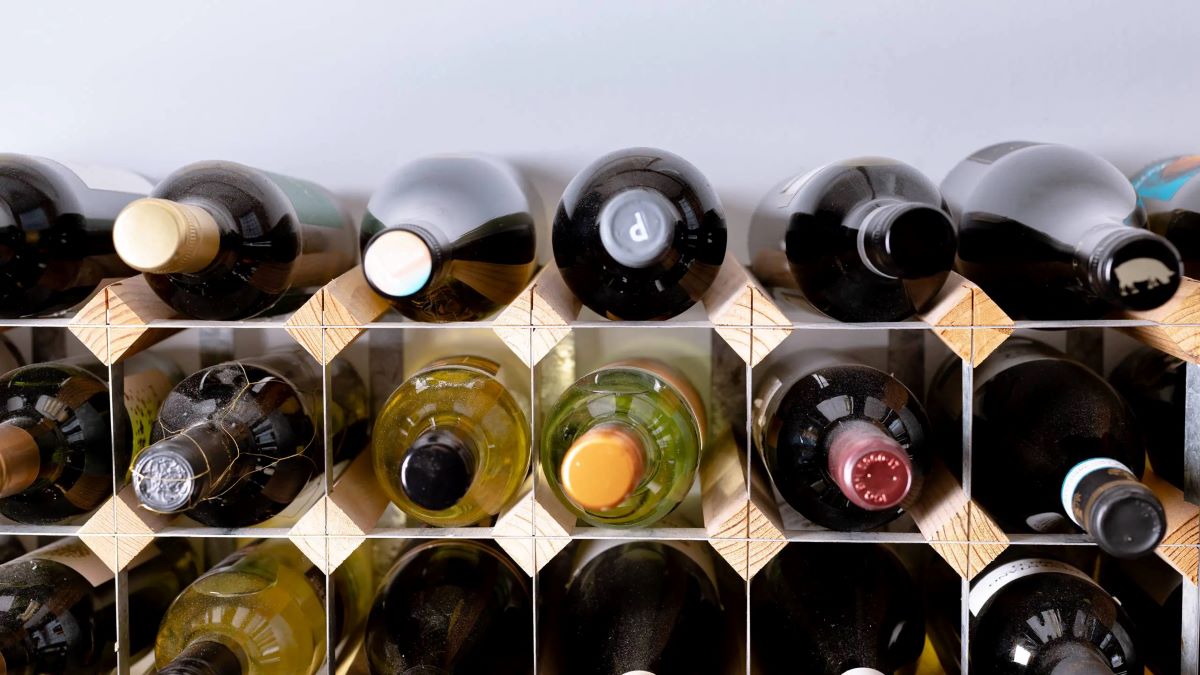
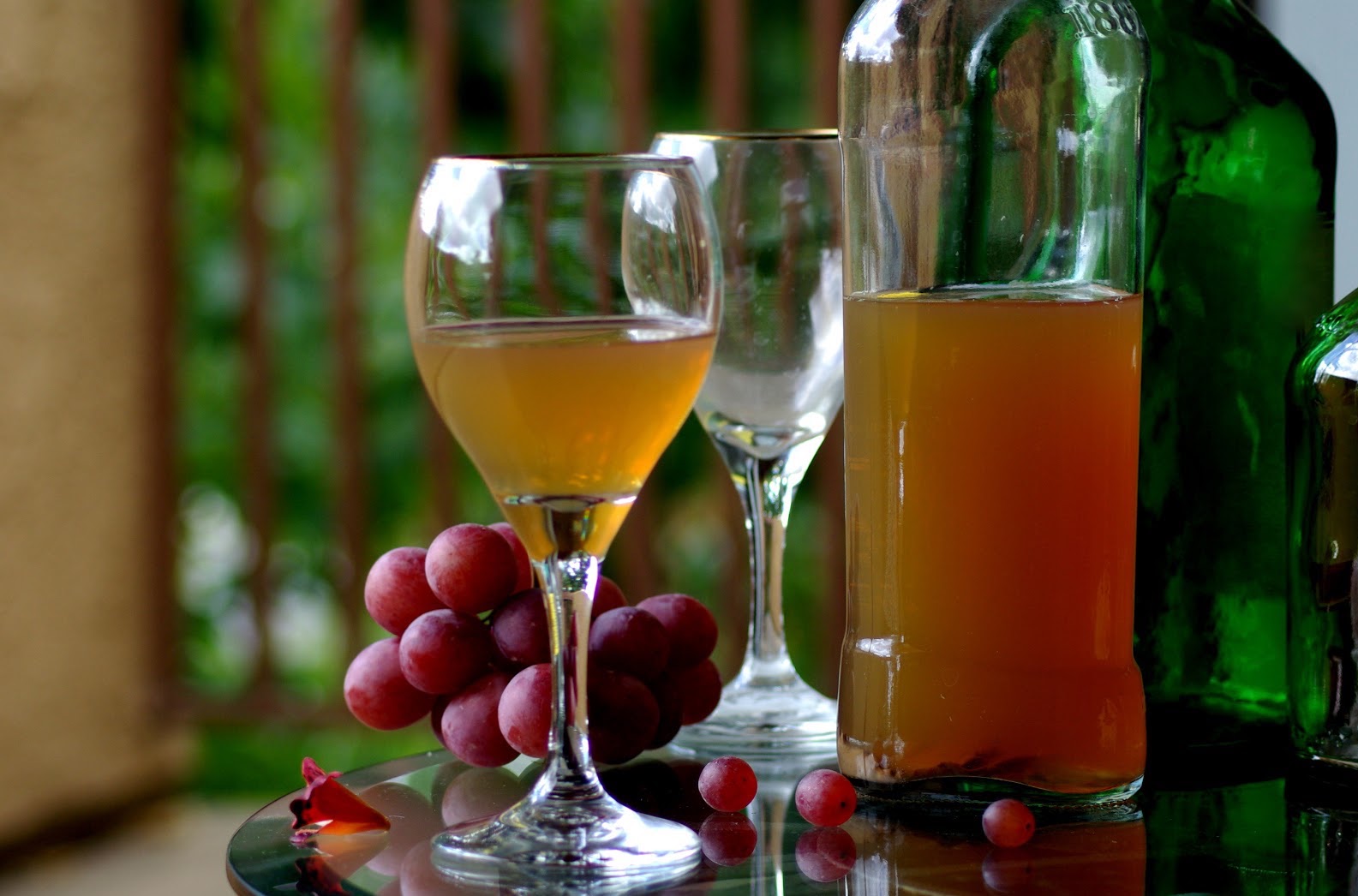

0 thoughts on “How To Store Port Wine”